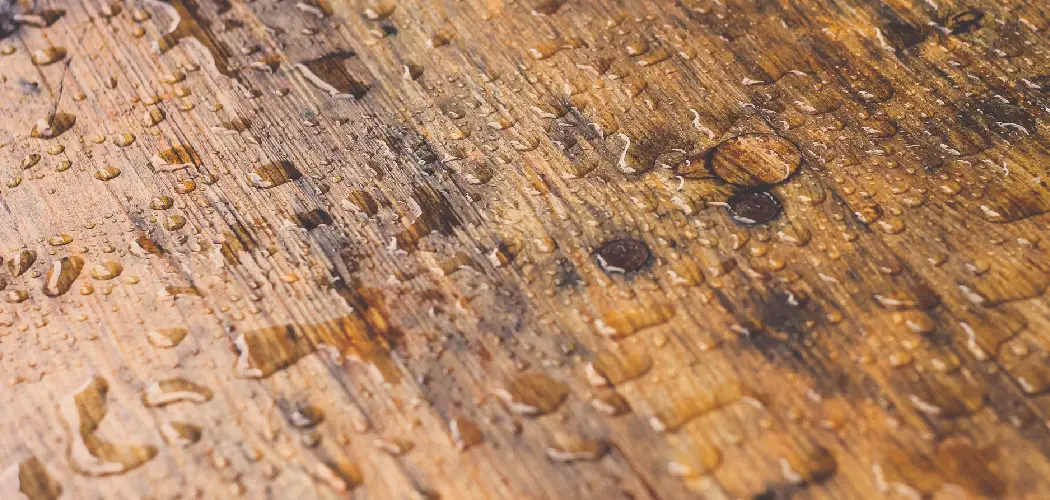Water damage is one of the most common problems faced by homeowners. Whether it’s a leaky roof or a broken pipe, water can cause serious damage to your home. If you have water damage, it’s important to act quickly to minimize the damage. One of the most common types of water damage is wood damage. When water seeps into the wood, it can cause warping, staining, and deformation.
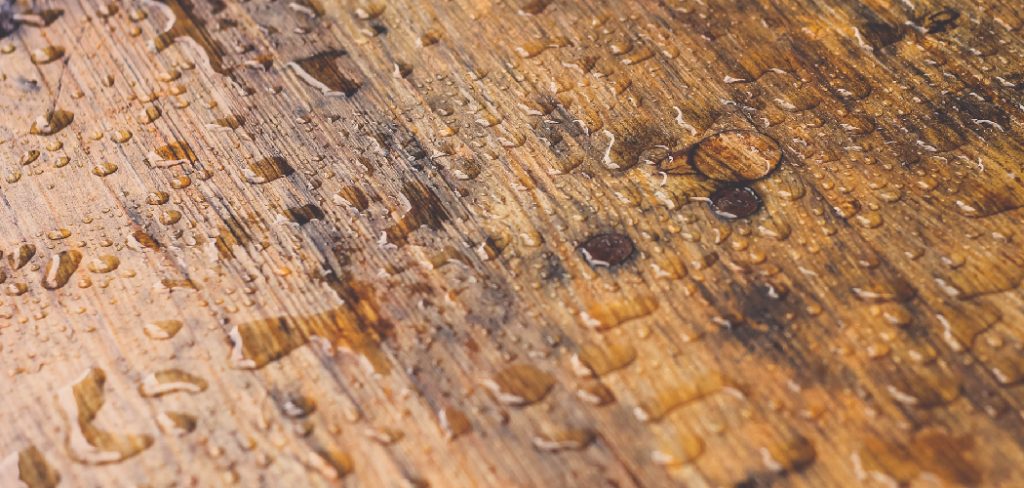
If you have water damage on your wood furniture or floors, there are a few things you can do to fix them. First, remove any wet items from the affected area. Next, use a vacuum cleaner with the wand attachment to suck up as much water as possible once the area is dry, sand down any rough edges, and apply a sealant to prevent further damage. In this blog post, You will learn how to fix water damage on wood in detail.
Step-by-Step Processes for How to Fix Water Damage on Wood
Step 1: Inspect the Wood
Check the level of water damage before starting the process. Inspect for any signs of mold, discoloration, or softening of the wood. Use a dry cloth to absorb as much excess moisture as possible from the wood surface.
Step 2: Remove Any Loose or Peeling Paint or Varnish
If the wood has a finish on it, such as paint or varnish, you will need to remove any flakes of material that the water has loosened. Use a putty knife to scrape away the peeling pieces carefully.
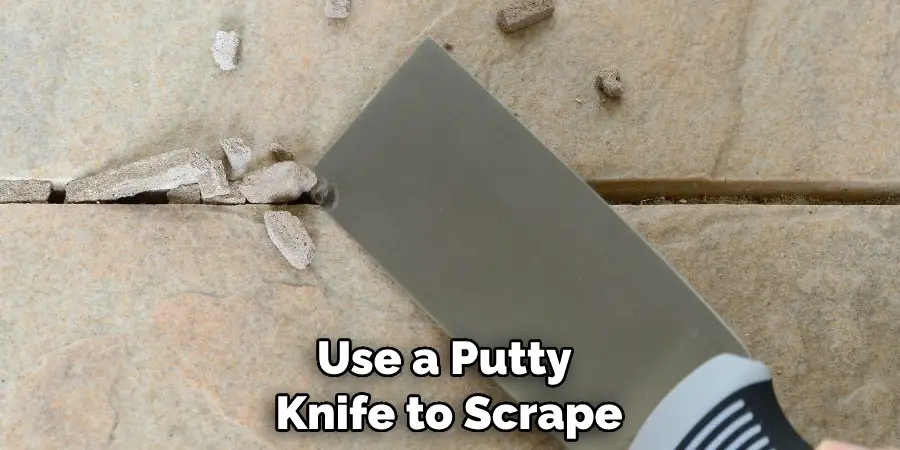
Step 3: Sand the Wood
Once paint or varnish has been removed, use medium-grit sandpaper to abrade the wood surface lightly. This will remove any rough or raised areas and smooth out the grain. Apply a wood hardener to the affected area. This will help strengthen and bind the wood fibers together, preventing further water damage. Allow the hardener to soak in for at least 15 minutes before continuing.
Step 4: Fill In Any Holes or Cracks
Use a wood filler to fill any holes or cracks in the wood surface. Choose a filler that is similar in color to the wood so you won’t have to paint over it after it’s dried. Once the wood filler has been applied and dried, use fine-grit sandpaper to smooth out the surface of the wood. This will ensure that all of the patches and repairs are blended in correctly.
Step 5: Apply a Primer or Sealer
Depending on the finish you plan to put on the wood, you may need to apply a primer or sealer first. This will help protect the wood from moisture and prevent further water damage. Use a paint or stain that is recommended for the type of wood you are working with. Apply even coats of the finish and allow it to dry completely before moving on to the next step.
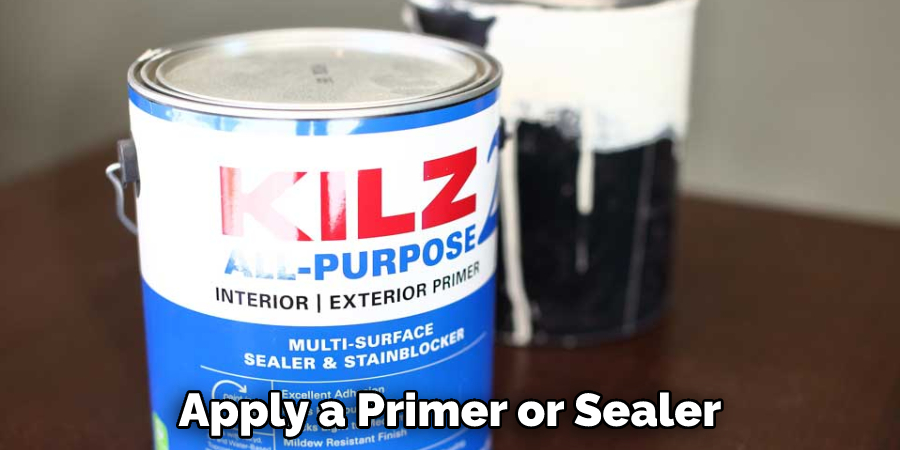
Step 6: Apply a Clear Coat or Topcoat
Once all of the layers have been applied and dried, you can apply a clear coat or topcoat to protect the finish. This is especially important in areas of high humidity or moisture exposure.
Step 7: Allow the Wood to Dry Completely Before Using
Once all of the steps are finished, allow the wood to dry completely before using it. This will help ensure that the repair is successful and that no further water damage occurs.
Tips for How to Fix Water Damage on Wood
- Identify the source of the water damage and take steps to prevent any further water or moisture from entering the area.
- Carefully inspect the affected wood and determine if it can be salvaged or needs replacing.
- Remove all furniture, rugs, fixtures, and other items from the affected area immediately to prevent further damage.
- Remove any damaged wood and debris, and wear gloves for safety.
- Dry the wood with a fan or dehumidifier for at least 24-48 hours before beginning repairs.
- Sand the affected area to prepare it for repair work and apply a sealant or primer to the area.
- Use a wood filler to patch any holes or cracks in the wood and allow it to dry thoroughly before proceeding with the repair project.
- Apply a coat of paint, varnish, or stain to the fixed area and allow it to dry completely before using the furniture again.
How Should You Clean and Dry the Area Around the Water-Damaged Wood?
Once you have assessed the damage, cleaning and drying up the area is important. Start by removing any excess water with a sponge or rag. If standing water or wet items are in the area, use a vacuum cleaner to remove them quickly. Make sure all the moisture is gone before proceeding with your repairs.
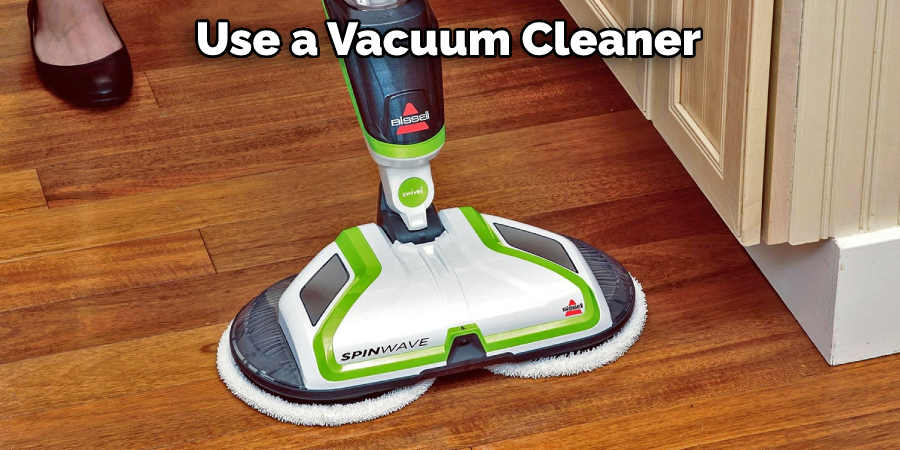
Then, use a cleaning detergent to clean the area and dry it carefully using a towel or cloth. If the water damage has caused mold growth, you may need to use an anti-fungal cleanser before drying the area. Once everything is dry, inspect the wood for any signs of warping or buckling. This can indicate that the wood was exposed to too much moisture for too long.
Finally, use a dehumidifier to remove any excess humidity from the area. This will help prevent further damage and make your repairs easier to complete. With all of these steps taken care of, you can begin fixing water damage on wood.
How Can You Fix Minor Cracking and Warping Caused by the Water Damage?
If you notice minor cracking and warping on the wood surface, sanding is a great way to fix these issues. You should start by using coarse-grit sandpaper to remove any loose pieces of wood. Then slowly work your way up from a medium-grit paper to a fine-grit one to smooth out the surface. Once the sanding is complete, you can apply a wood filler to fill in any cracks and holes.
If areas of the wood have warped due to the water damage, you can try using clamps and weights to flatten them before applying a sealant on top. This will help protect the wood from further harm.
You may also want to consider staining the wood surface to prevent further water damage and make it look better. There are various stains available on the market, so choose one that works best with your type of wood and desired look.
How Can You Prevent Your Wooden Furniture From Suffering Water Damage in the Future?
Water damage can be heartbreaking, especially when it’s your favorite piece of wooden furniture. The good news is that you can prevent water damage from happening again in the future by taking preventive measures.
First and foremost, always make sure to keep your wooden furniture away from high-moisture environments. This means avoiding placing wooden furniture near water sources such as sinks or bathtubs and also keeping it away from heating sources like radiators or air conditioners.
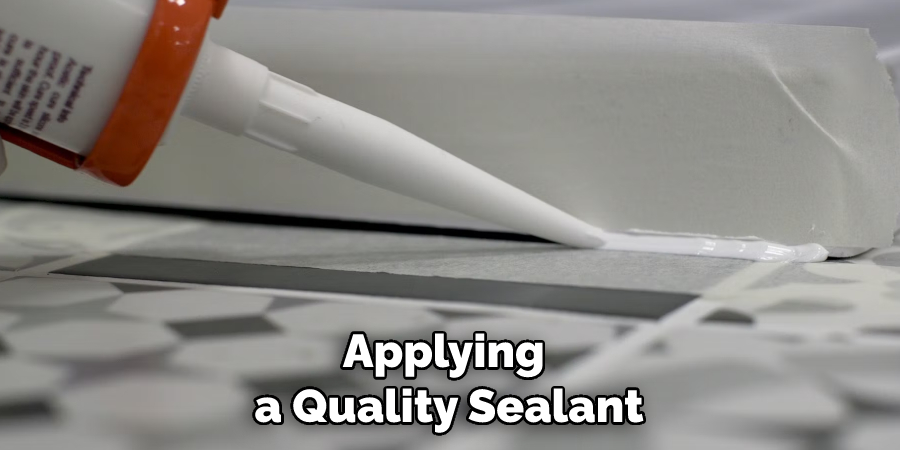
Applying a quality sealant can also protect your wooden furniture from water damage. Look for products specifically made for wood, and read the instructions carefully to know how to apply the sealant properly. You may need to do this annually, depending on the type of wood used and how much wear it gets.
Finally, if you tend to use your wooden furniture outdoors, ensure that you cover it when rain is expected or when moisture levels are high. This will help protect against water damage and will also help preserve the longevity of your furniture.
Is It Necessary to Call Any Professional to Fix Water Damage on the Wood?
The answer to this question is complex and depends on the extent of the water damage. In some cases, it may be feasible to repair certain types of water damage on your own. For example, if the wood has simply been warped by exposure to moisture, you might be able to fix it by sanding and varnishing it.
However, if the wood has been deeply damaged or is rotten due to water damage, it may be best to call a professional for help. Professionals will have the necessary experience and tools to assess the severity of the damage and determine how best to repair it. They can also advise how to prevent further water damage in the future.
How Much Will It Cost if You Hire a Professional?
If you choose to hire a professional for water damage repair on wood, the cost can vary greatly depending on the extent of the damage. The cost usually ranges from $200 to $2,000 or more. Sometimes, your insurance company may cover all or part of the costs. You should contact your insurance company to find out more about eligibility and coverage amounts.
When hiring a professional, it is important to ensure you work with someone reputable. Check online reviews and ask for references from previous clients before making your choice. It is also worth comparing quotes from several different companies to ensure you get the best possible price for the job.
Conclusion
In conclusion, water damage on wood can be repaired with a few simple steps. Start by assessing the extent of the damage, then use the appropriate cleaning methods and materials to remove mold or mildew from the affected surfaces. You should also use dehumidifiers to reduce humidity levels in the area and replace any ruined pieces of wood with new pieces.
Finally, protect the wood with a water-resistant sealant to help prevent future damage. With proper care, you can restore your wood surfaces and keep them looking their best for years to come. I hope this article has been beneficial in learning how to fix water damage on wood. Make Sure the precautionary measures are followed chronologically.
You Can Check It Out to Fix Water Damaged Swollen Wood Table

